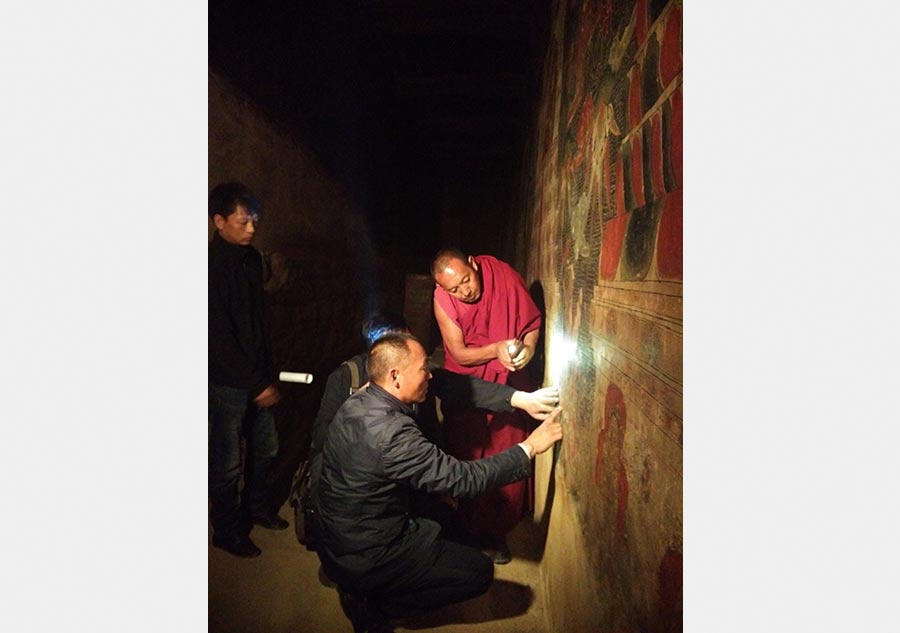 |
|
Workers examine a fresco. [Photo by Wang Kaihao/China Daily] |
Rebirth of Frescoes
Different efforts have been mobilized to jointly participate in renovations of Buddhist sanctuaries in Tibet.
For instance, in Drepung Monastery, the biggest monastery in Lhasa, capital of the Tibet autonomous region, experts from Beijing-based Chinese Academy of Cultural Heritage cooperate with lamas to save the fading frescoes.
The monastery was first built in 1416, and its constructions continued to be expanded for centuries, which left a section of frescoes in Tsokchen Temple, the main construction, to be hidden behind walls since the 18th century.